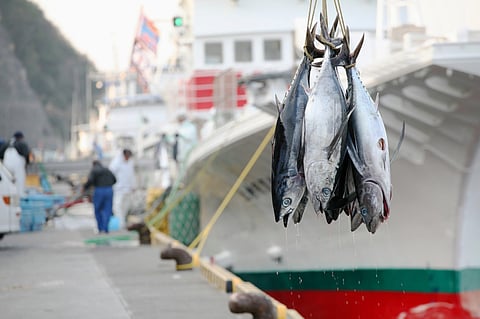

According to the OECD-FAO Agricultural Outlook 2023-2032, global fish production, consumption, and trade are expected to grow slower in the next decade compared to the previous one.
The report, produced by the Organisation for Economic Co-operation and Development (OECD) and the Food and Agriculture Organization (FAO) of the United Nations, assesses ten-year prospects for agricultural commodity and fish markets at national, regional, and global levels.
The slower predicted growth is primarily due to decreased demand in Asian countries, the main consumers of aquatic food. The report highlights the impact of policy changes on sustainability in China, which have slowed expansion of aquaculture production. However, another key factor is increased input costs, especially in terms of energy.
The OECD-FAO report also predicts that 2032 will be another El Niño year, with higher marine temperatures leading to lower production from catch fisheries, mainly in South America.
However, despite the slower pace of growth, global fish production will continue to expand to satisfy increasing demand, reaching 202 million tons by 2032, with aquaculture driving 96% of additional production.
By 2032, aquaculture production is projected to produce 111 million tons per year, overtaking capture fisheries to account for 55% of total fish production, compared with 50% in the base period of 2020-2022. Despite the increase, this represents a slowdown in growth.
The OECD-FAO Agricultural Outlook notes that the slower overall growth in aquaculture is due to a combination of factors including lower productivity from tightened environmental regulations, biological problems resulting from high stocking densities, and lack of access to suitable locations for production facilities.
On average, the capture fisheries sector is expected to grow only marginally, reaching 91 million tonnes of annual production by 2032 (up 1 million tonnes from the previous decade), expect for during El Niño years, which will see reduced levels of wild catch.
Meanwhile, consumption of food fish per capita is projected to increase in all continents except Africa, which has the fastest-growing population. Asia is expected to experience the strongest growth in per capita consumption, while Africa is projected to see a decline.
According to the predictions, food fish consumption will account for approximately 90% of total fisheries and aquaculture production (up from 88% during 2020-2022), with the remaining 10% of production used for fish meal and other uses.
Globally, fishmeal production is expected to increase, mainly driven by the sector's increasing use of by-products from fish residues following processing. The OECD-FAO Agricultural Outlook notes that increasing consumer demand for fish fillets will increase the amount of byproducts available, supporting this expansion.
